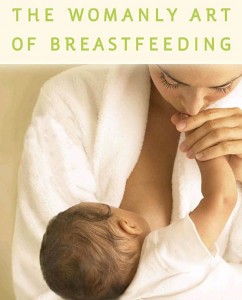 In the early 1970s less than 25% of new mothers tried to breast-feed their newborns. Now 75% of infants are receiving some breast milk. There is still much controversy about breast-feeding, as mothers that don’t breast-feed are often criticized, and there are debates about the right to breast-feed in public and the best age for weaning.
In the early 1970s less than 25% of new mothers tried to breast-feed their newborns. Now 75% of infants are receiving some breast milk. There is still much controversy about breast-feeding, as mothers that don’t breast-feed are often criticized, and there are debates about the right to breast-feed in public and the best age for weaning.
- Breast-feeding is natural. This depends on how you define the word “natural.” Breast milk is produced by the human body and for most of human history breast-feeding infants has been a basic fact of life. But its value as being wholesome and nutritious depends on what the mother has been eating, drinking and breathing. There are concerns about environmental contaminants that nursing mothers can’t control, and women have been arrested for feeding their infants milk contaminated by drugs, alcohol and even prescription medications.
- Formula is just as healthy as breast milk. Breast milk with its unique blend of proteins, fats, vitamins and carbohydrates conveys a range of additional benefits that go beyond simple nutrition, including decreasing the risks of ear infections, asthma, gastrointestinal ailments, diabetes, allergies, obesity and sudden infant death syndrome.
- One year is the best time for weaning. Most women aim to breast-feed for one year, but there’s nothing special about that amount of time. Most of the benefits of breast-feeding have already occurred by the end of the fourth month. The one year goal reflects our ambivalence about the breast in modern culture: it is both a symbol of maternal care and the epitome of a woman’s sexuality. As babies grown teeth, begin to walk and talk, the sexual begins to overshadow the maternal. Some women, however, discover how difficult it is to wean their children off breast milk and may continue it for years.
- Most American women breast-feed. Statistically that is true, as 75% try to breast-feed and 35% are still doing it at 3 months. This doesn’t show the large differences between races and classes. White, educated, older and married women are more likely to breast-feed. Lower income and minority mothers have fewer resources and face economic barriers as they are less likely to get paid maternity leave. Pumping – the solution for working mothers – is often not available at work due to a lack of a clean, safe and private space.
- Breast-feeding rates dropped in the 20th century because women entered the work force. U.S. breast-feeding rates actually began rising just as women entered the work force in large numbers in the 1970s. The women’s movement, which encouraged women’s entry to the workplace in the 1970s, was also instrumental in the resurgence of breast-feeding.
